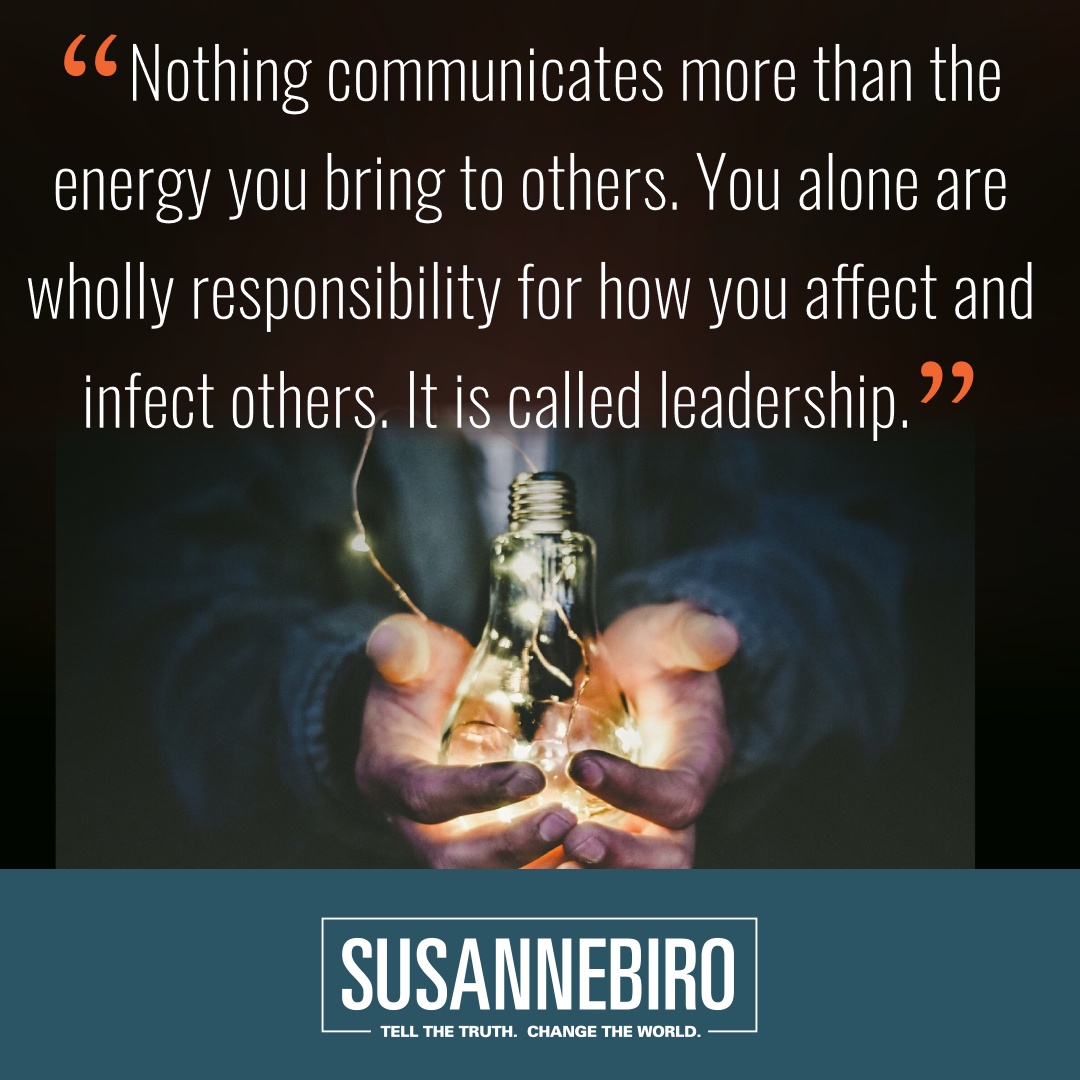FORBES: Energy. The Leadership Superpower You Cannot Ignore

Energy is a fundamental force of the universe. Everything we see, touch or feel is a manifestation of energy—atoms vibrating at various frequencies, forming the physical and intangible realities of our lives. Yet how often do we stop to consider the energy we bring to our leadership roles and the profound impact it has on those we lead?
The Energy We Bring Changes Everything
Our energy doesn’t just define us; it shapes our results, relationships and legacy. Leadership is not just about what we do but about who we are being while we do it. This truth is reflected in the investments organizations make in culture, which is essentially the collective energy of a group.
You’ve likely heard the phrase “Leaders bring the weather.” When you walk into a room, your energy changes it—positively or negatively. The only question is: What impact are you creating? Life-giving energy inspires innovation and trust, while draining energy creates climates of stress and apathy.
If culture is the collective energy of your organization, leadership is the source. What weather are you bringing today?
The Invisible Toll Of Drained Energy
Recently, my husband, a doctor of traditional Chinese medicine and acupuncture, came home visibly drained. Several of his patients had shared stories of childhood trauma that day, and their emotional weight had overwhelmed him. He turned to me and asked how I handle the emotional energy of clients, as many also share deeply personal stories about their pasts. Though I am not a therapist, the stories of childhood wounds often inform the adult behaviors that leaders carry into their professional lives.
I shared with him something I learned early in my career. As a young executive coach, I once attended an advanced coaching program in Maine. Over dinner, a seasoned coach in her sixties asked me, “How do you protect yourself from the energy of your clients?” I didn’t understand her question at first. She explained that unless I consciously protected myself, I might absorb the energy of those I worked with—an occupational hazard for anyone in a leadership or coaching role.
The next morning, she introduced me to a simple yet powerful practice: the white light visualization. This exercise involves imagining a protective, radiant white light surrounding you. She instructed me to extend this light outward, about three feet in all directions, creating a personal space of peace, strength and grounding. Though it felt a little unconventional at first, I immediately noticed how much lighter and more centered I felt.
People often ask if listening to clients all day is exhausting. My answer is always the same: It’s not draining at all. In fact, I leave client sessions more inspired and energized than when I began. Witnessing my clients’ resilience, breakthroughs and courage is a privilege that fuels me.
This ability to stay energized is directly linked to maintaining healthy boundaries. Protecting my energy—via good quality sleep, food, exercise, time in nature and the white light visualization—ensures I remain fully present for my clients while keeping my own vitality intact.
Oprah Winfrey has also emphasized the importance of shielding one’s energy. “All life is energy and we are transmitting it at every moment,” she has said, “beaming little signals like radio frequencies, and the world is responding in kind.” If someone as successful and business savvy as Oprah found value in this practice, why shouldn’t we as leaders do the same?
Managing energy—our own and that of others—is not a luxury. It’s an essential leadership skill. Without conscious boundaries, negative energy can drain us, leaving us ineffective and disconnected.
The Energy We Absorb—And Emit
We all intuitively understand energy.
- Who lifts you up?
- Who leaves you feeling drained?
We’ve all encountered “energy vampires”—people whose negativity saps our vitality. Conversely, some people leave us feeling inspired and energized.
As leaders, we must ask:
- Do we drain others or inspire them?
- Are we creating a culture where people thrive or just survive?
If you feel drained after work, it might not just be the workload—it could be the low energy of those around you. Or perhaps it’s a reflection of how you’ve been showing up.
Practices To Protect And Elevate Your Energy
Managing our energy is an important part of our job. What can you do to protect and elevate yours? Here are a few strategies:
1. Have a practice.
Practices like the white light visualization or early morning meditation, prayer or intention-setting can help create emotional boundaries, ensuring that the energy of others that day doesn’t overwhelm you.
2. Choose your circle wisely.
Surround yourself with people who inspire and energize you, and limit time with those who drain you.
3. Prioritize self-care.
Sleep, nutrition, exercise and time in nature are important mental health practices that all human beings need to keep their energy filled.
4. Reflect on your impact.
Regularly ask: What energy am I bringing to my team? Are you uplifting or unknowingly adding negativity or unnecessary stress?
5. Practice gratitude.
Gratitude shifts energy instantly. Start your day with this daily morning practice to set a positive tone.
Leading With Life-Giving Energy
Leadership is inherently energetic. Whether you realize it or not, your energy influences everything—from a meeting’s tone to your organization’s culture simply because you will often be one of the more powerful people/positions in a room. As senior leaders, harnessing and protecting the right energy is one of your most powerful tools for driving the right impact.
In today’s relentless world of information and change, managing energy is not optional—it’s critical. The next time you walk into a room, ask yourself: What weather must I bring? Your energy doesn’t just affect that room—it shapes the culture, performance and lives of everyone you lead.
The universe may be made of energy, but your leadership ensures that energy moves in the right direction. Use it well today.
As published in Forbes

